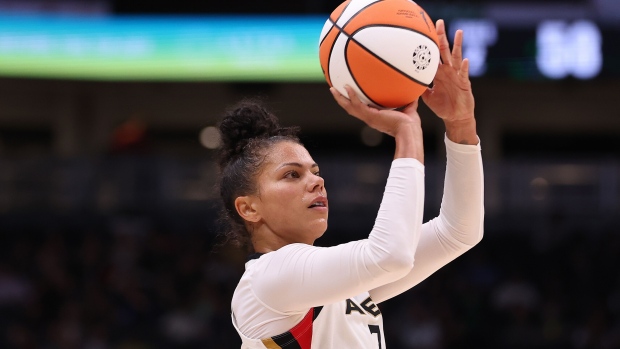May 3, 2024
What It’s Like Being a Pro Athlete on a $100,000 Salary
, Bloomberg News

(Bloomberg) -- WNBA veteran Alysha Clark has seen the league evolve over the past decade, especially when it comes to pay.
“My first paycheck was pennies,” The 36-year-old forward said in an interview last week at a conference in New York.
In 2010, Clark got drafted from Middle Tennessee State by the league’s San Antonio franchise, which has since moved to Las Vegas. She didn’t make the team, but two years later signed with the Seattle Storm when the minimum rookie salary was about $37,000 — roughly 25% below the US median household income at the time.
“Financial advisers weren’t knocking down my door trying to help me invest,” Clark said.
@Alysha_Clark told us which celebrity she would pick to buy a basketball team.She also shared the best money advice she got on this week’s Lessons and Investments https://t.co/qzt5hMDYv8 pic.twitter.com/s3DsDnQ2RB
— Bloomberg (@business) May 2, 2024Minimum salaries have nearly doubled since Clark started in the league thanks to the collective bargaining agreement signed in 2020. She now makes $110,000 a year, according to Spotrac, playing for the Las Vegas Aces, which won the WNBA title last season giving Clark her third ring.
Salaries are higher, but there’s more attention on the wide gap in contract values between the WNBA and NBA as phenom Caitlin Clark enters the league on a rookie deal that will pay her $76,500 a season. To supplement their incomes, many women sign with overseas clubs in the WNBA’s offseason; Clark has played in Israel.
Staying in the WNBA is also tough because there are just 12 teams, compared to 30 in the NBA, so competition is tough with a new crop of college players fighting for roster spots every year.
However, the league is planning to add two teams by 2026, including one in the San Francisco Bay region. When asked who should buy the other expansion team, Clark didn’t hesitate. “Queen B,” she said referring to Beyonce.
Clark recently spoke to Bloomberg about her career, finances and advice for rookies.
As someone who had to battle her way into the league, have you reflected on what you’ve accomplished as you enter your 12th WNBA season?
After we won in 2023, on our flight back where I couldn’t believe this is my life. This isn’t something I set out to do. I wasn’t a top draft pick. I was cut. And to be standing where I was after winning three championships, being one of the few people left from my draft class. What a blessing.
When did you start seeking out financial guidance, and what’s the best advice you’ve received?
It wasn’t at the beginning. We weren’t making a lot of money. It wasn’t until probably six years ago, where a financial adviser said your money should be making money for you. That was not a concept that I grew up around.
What financial advice would you give younger players who might be coming in with more marketing opportunities than you had?
Obviously, the landscape has changed. But I would say to reach out to us vets in the league about how we created sustainability. They’re obviously making a lot more money, but for us to be able to sustain the paychecks we have gotten to be where we are, there are lessons in that.
What’s the best investment you’ve made?
My house. If I want to sell, I’m going to walk away with a nice check from it.
Are there any lavish purchases you look back on with regret?
Honestly, no. I’m a frugal person. When I do make a big purchase, it’s usually something I’ve thought about, researched and sat on for at least a week before I decided to pull the plug and do it.That’s just how I grew up. When you go paycheck to paycheck you really understand the value of a dollar and what to spend it on; what’s a necessity and what’s a want. From early on, I learned what wants were. And I was like ‘I don’t need those, so let me just pass on that.’”
Editor’s note: This interview has been edited and condensed.
Sign up for Bloomberg's Business of Sports newsletter for the context you need on the collision of power, money and sports.
©2024 Bloomberg L.P.


